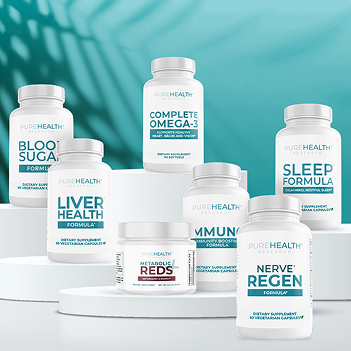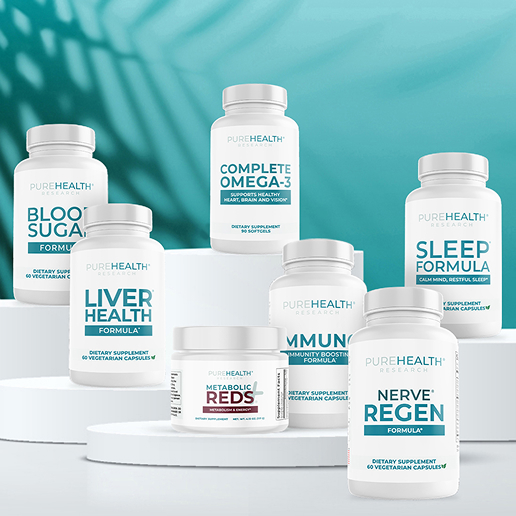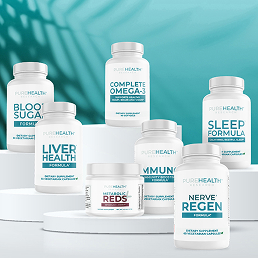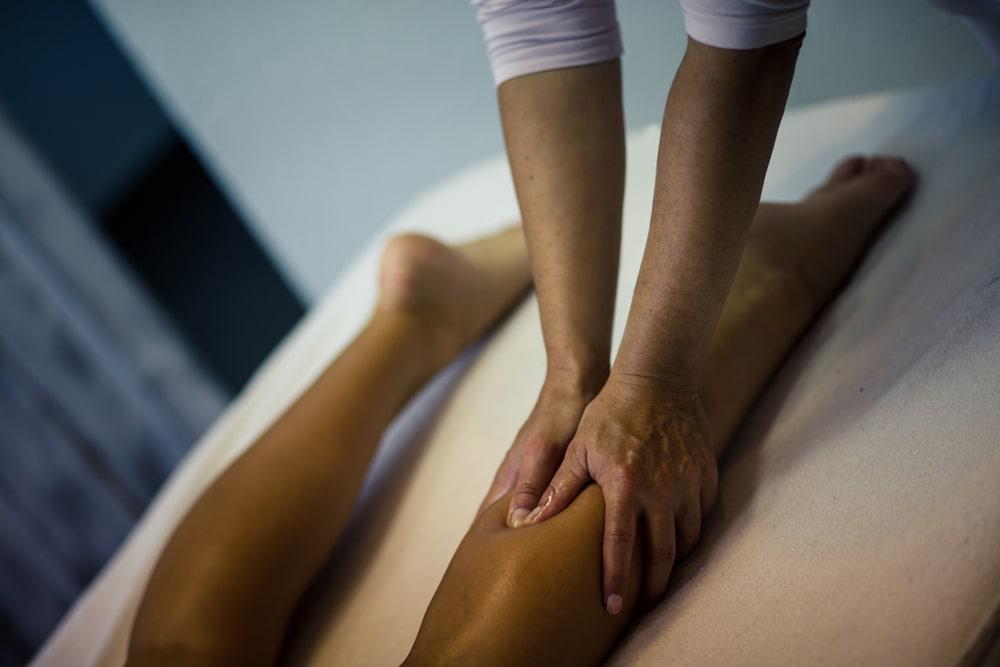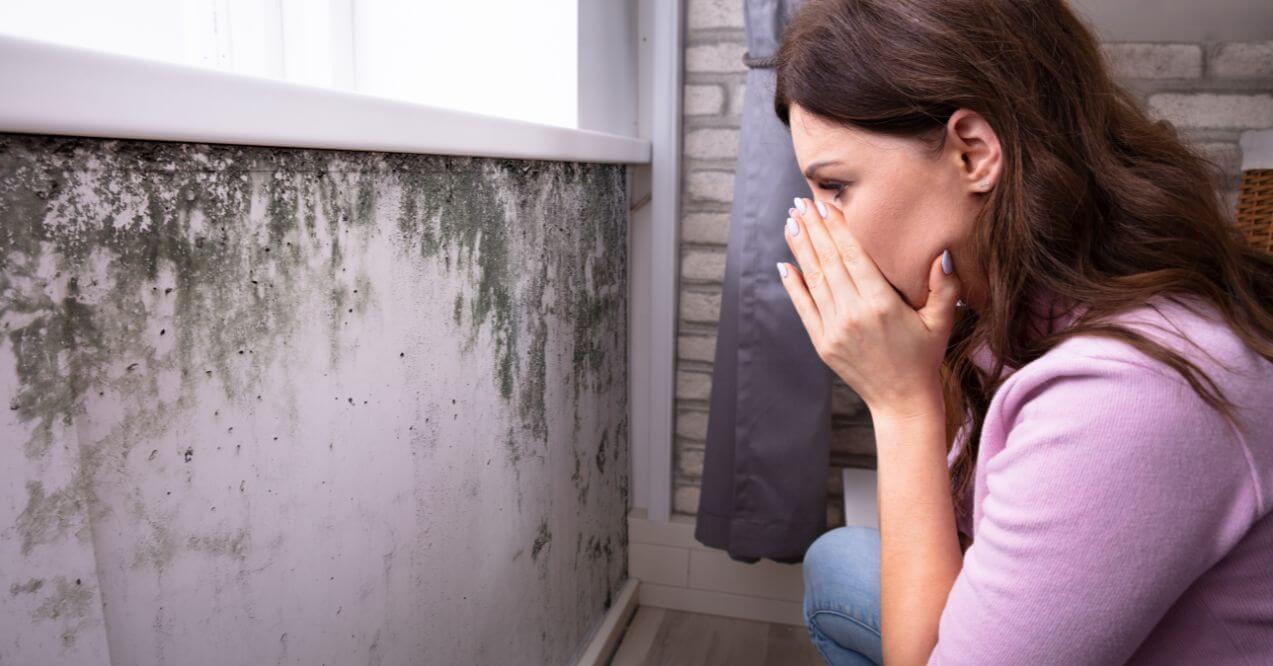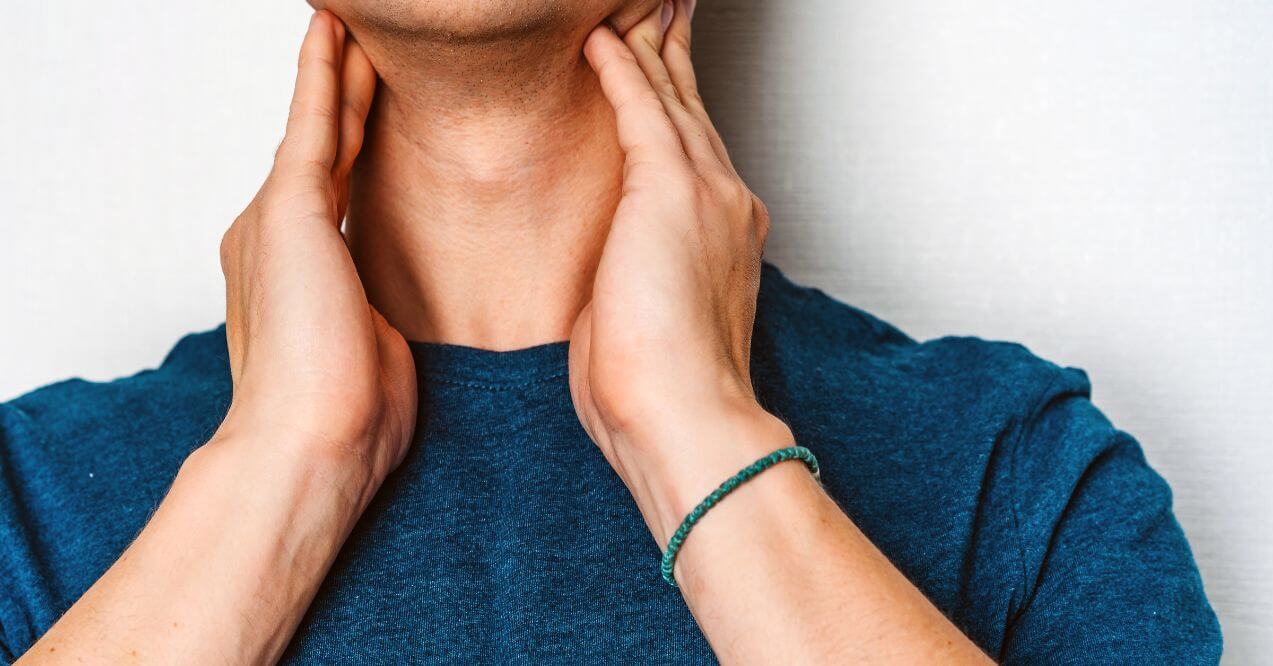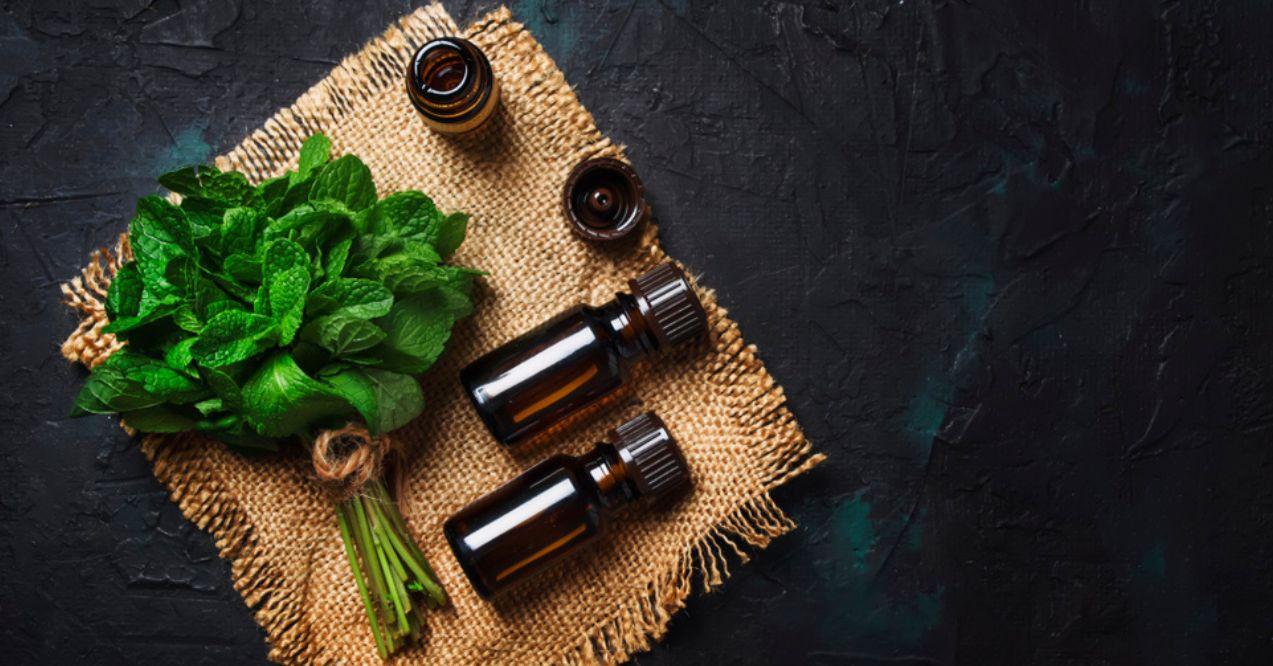10 Best Edema Rehabilitation Head and Face Exercises
Discover 10 effective edema rehabilitation head and face exercises to reduce puffiness and promote comfort. Simple techniques for better fluid balance!
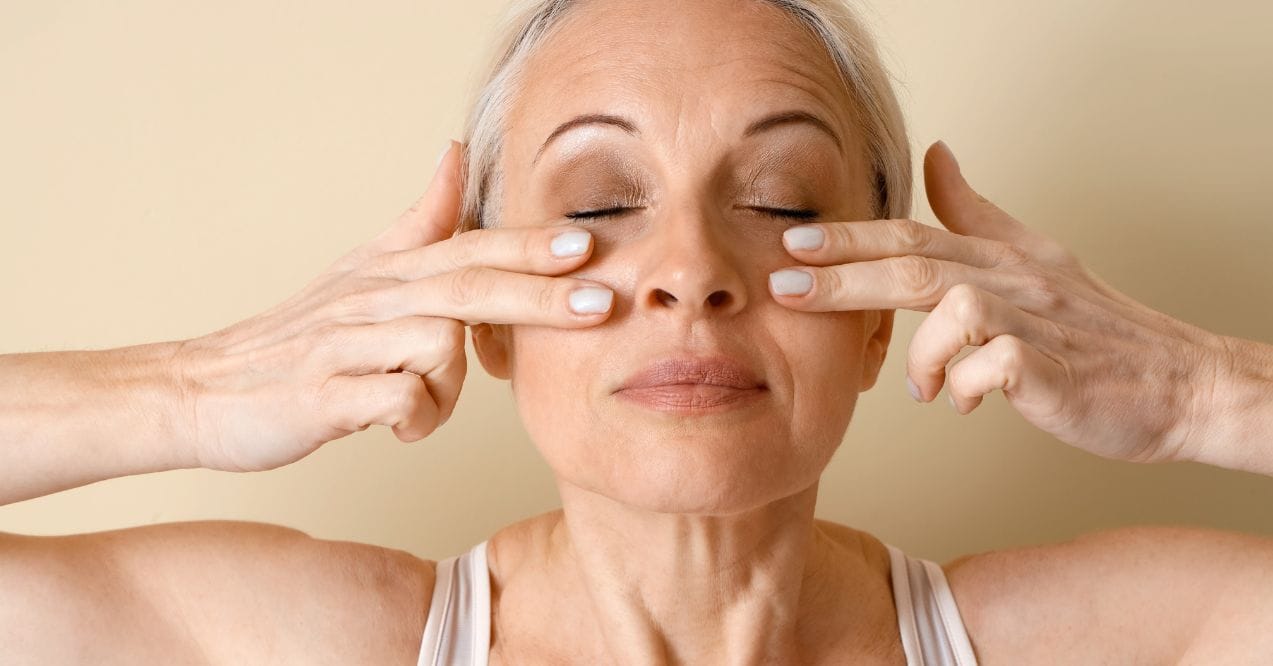

Did you know that fluid retention affects nearly 1 in 3 adults over 60? That uncomfortable puffiness around your face and head doesn’t just affect your appearance- it can impact your comfort and daily activities.
Edema is simply the buildup of excess fluid in your body’s tissues, causing swelling that can make your face feel tight and uncomfortable. When fluid lingers in facial tissues, even simple activities like smiling or turning your head can become challenging.
In this guide, we’ll explore ten effective exercises designed to support healthy fluid movement in your head and face. These gentle edema rehabilitation head and face exercises can help maintain balance and promote comfort – no complex routines required!
What Is Edema?
Edema occurs when excess fluid builds up in your body’s tissues, causing noticeable swelling. While it can affect any part of your body, edema in the head and face is particularly noticeable and can be uncomfortable.
When fluid accumulates in facial tissues, you might notice:
- Puffiness around your eyes, especially in the morning
- A feeling of tightness in your cheeks or forehead
- Difficulty making facial expressions
- Discomfort when turning your head or neck
Several factors can contribute to fluid buildup in the head and face. Prolonged sitting or standing without movement may slow fluid circulation. Consuming foods high in sodium can cause your body to retain more water. Poor sleep habits, especially lying flat without head elevation, can also allow fluid to gather in facial tissues overnight.
Additionally, inflammation in nearby areas can sometimes trigger lymphatic congestion. For example, people often ask, can a tooth infection cause swollen lymph nodes? The answer is yes—your lymphatic system reacts to infections anywhere in the head or mouth, which may cause temporary swelling and fluid retention.
Ten Edema Rehabilitation Head and Face Exercises
The following gentle movements are designed to encourage natural fluid balance throughout your head and face. These edema rehabilitation head and face exercises may help promote mobility in areas where fluid tends to collect while supporting overall relaxation. Practice these exercises daily for best results, preferably in the morning or whenever you notice increased puffiness.
1. Deep Breathing Exercise
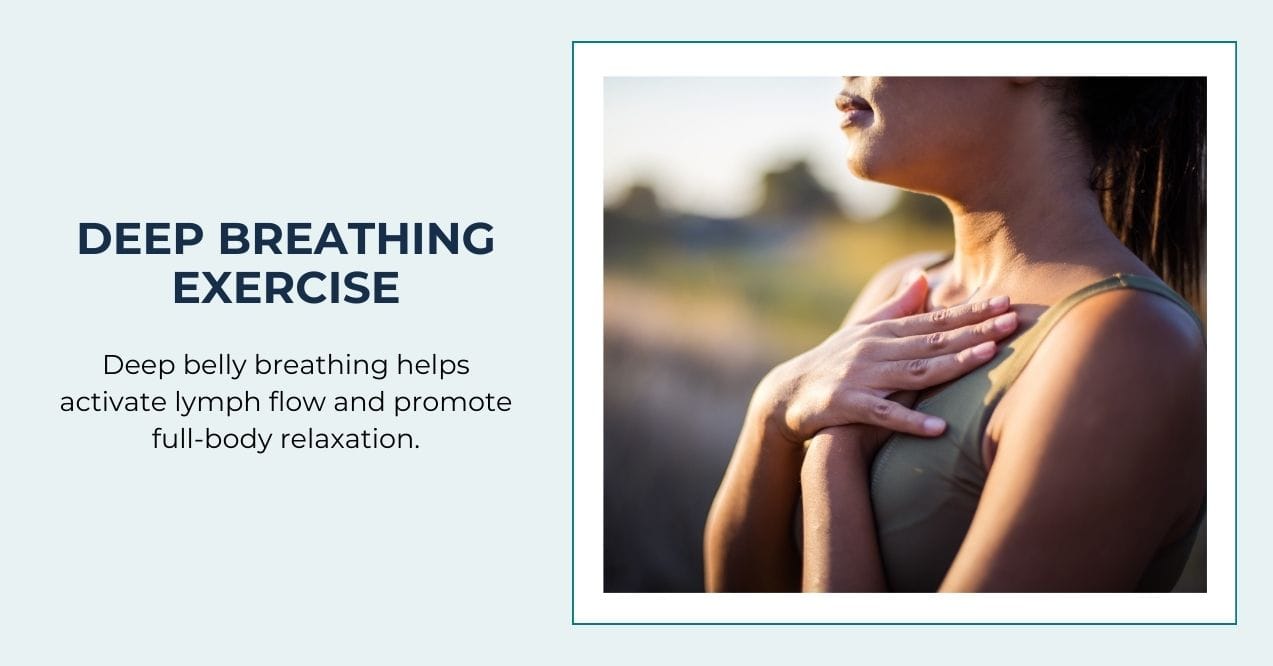
This foundational exercise helps activate your entire lymphatic system, encouraging fluid movement throughout your body:
- Sit comfortably with your back straight and shoulders relaxed
- Place one hand on your chest and the other on your abdomen
- Inhale slowly through your nose for a count of 4, feeling your abdomen expand
- Hold for 2 seconds, then exhale completely through your mouth for a count of 6
- Repeat 5-10 times, focusing on the sensation of relaxation with each breath
2. Shoulder Rolls
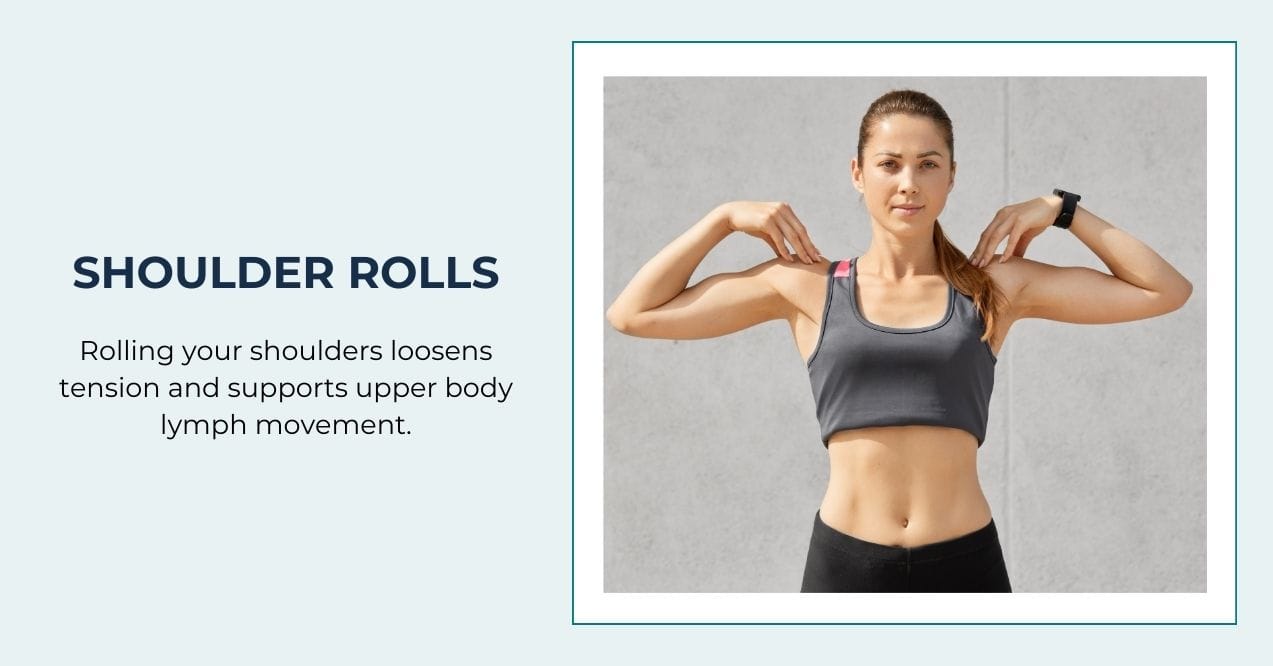
Shoulder tension can restrict fluid movement in the upper body and neck:
- Sit or stand with your spine straight and arms relaxed at your sides
- Slowly roll both shoulders forward in large circles 5 times
- Reverse direction and roll shoulders backward 5 times
- Drop your shoulders down away from your ears and hold for 3 seconds
- Repeat the entire sequence 3 times, breathing naturally throughout
3. Neck Side Bends
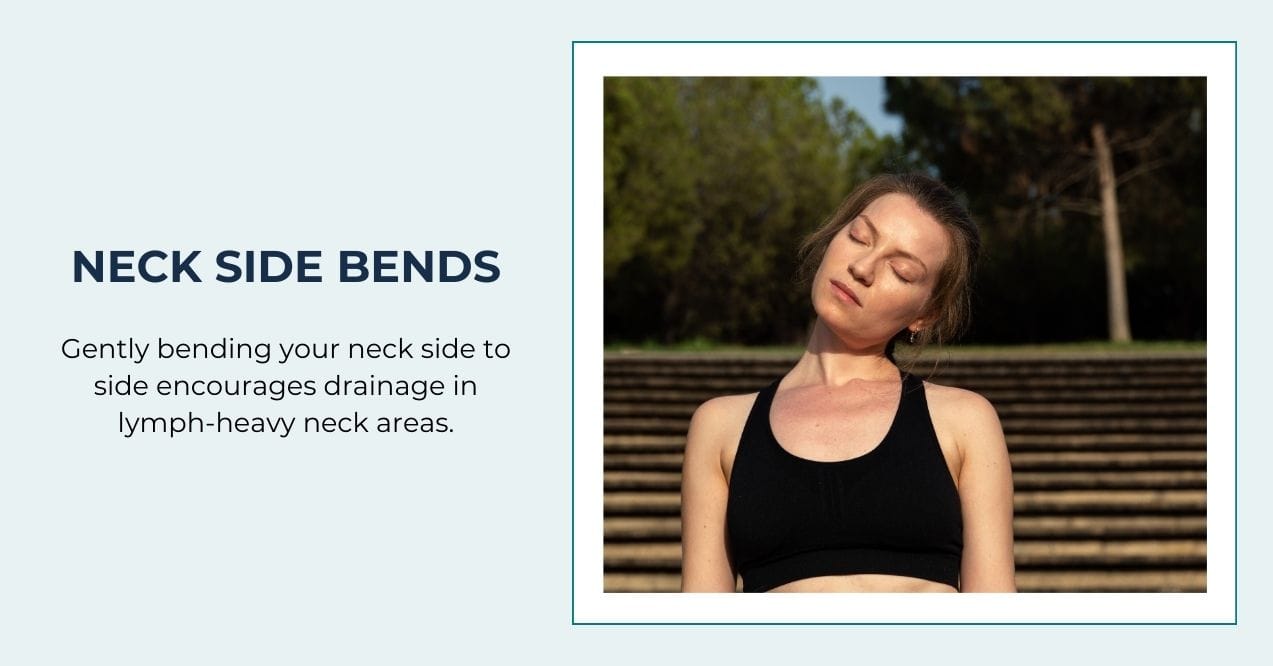
This exercise supports lymph node drainage neck areas where fluid often collects:
- Sit with your back straight and shoulders relaxed
- Gently tilt your right ear toward your right shoulder, keeping your shoulder down
- Hold for 5-10 seconds, feeling a gentle stretch along the left side of your neck
- Return to center, then repeat on the opposite side
- Complete 5 repetitions on each side, breathing deeply throughout
4. Chin Tucks
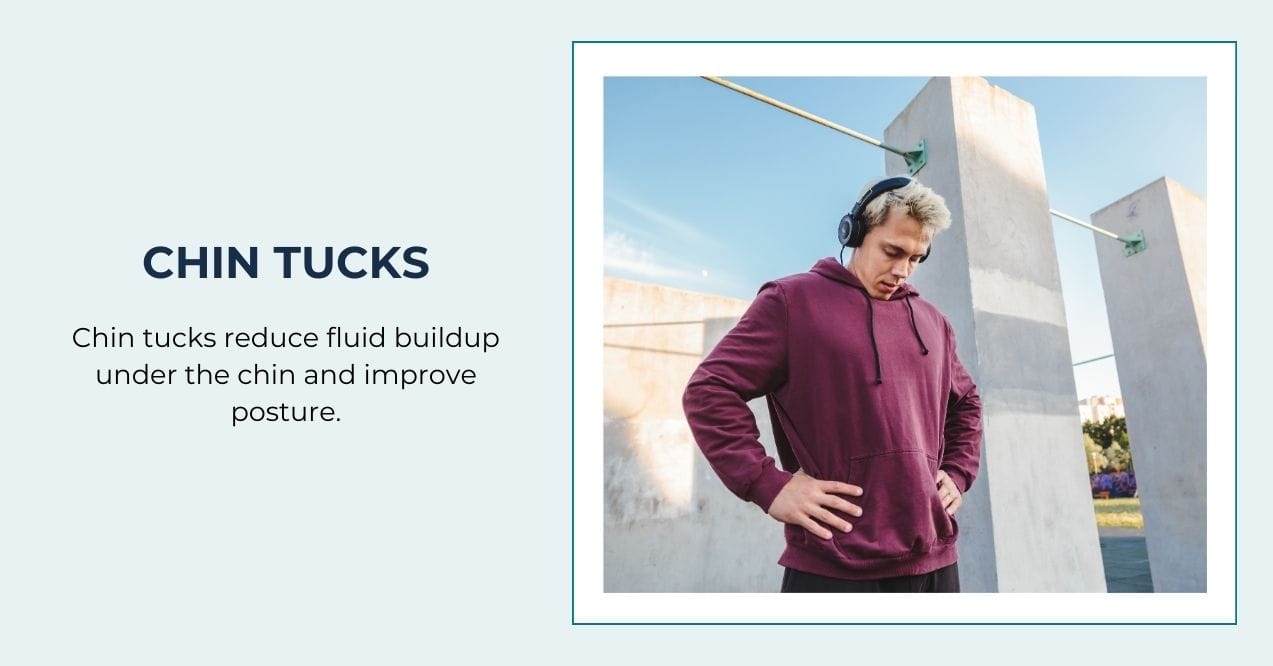
Chin tucks help reduce fullness under the chin and promote fluid movement:
- Sit or stand with your spine straight
- Keep your eyes looking forward at eye level
- Gently draw your chin straight back, creating a “double chin” effect
- Hold for 3-5 seconds, then release
- Repeat 10 times, maintaining proper posture throughout
5. Jaw Movements
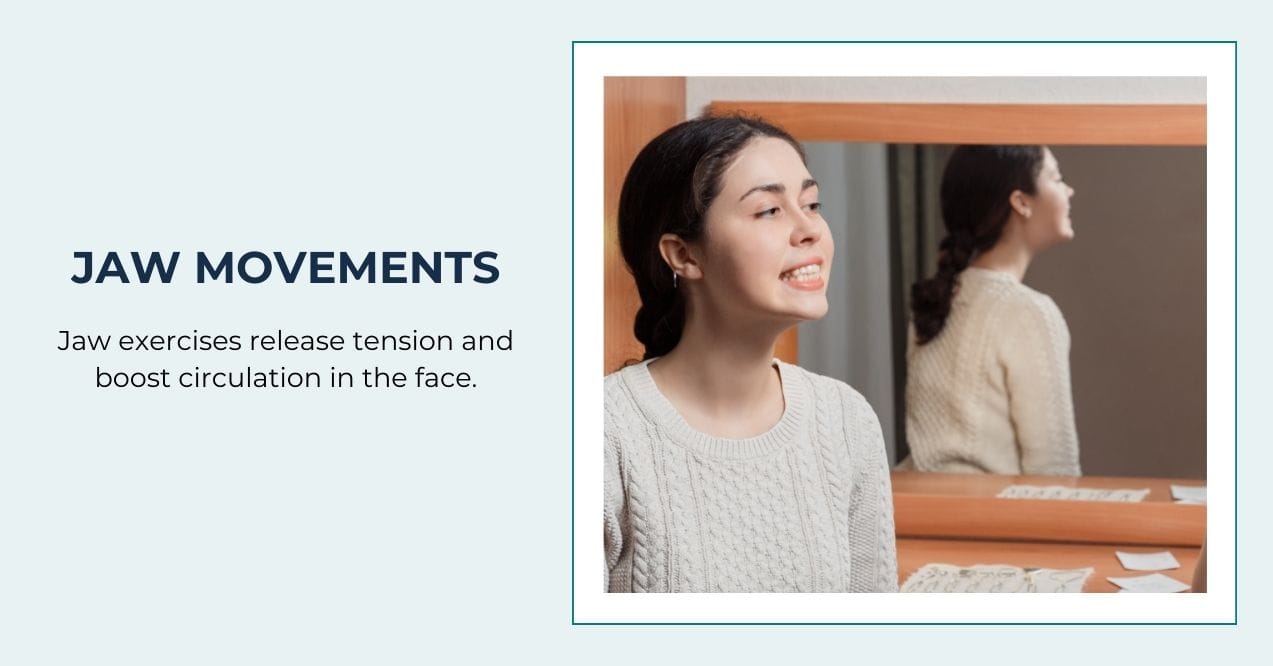
These movements help reduce tension and puffiness in the jaw area:
- Open your mouth as wide as comfortable, hold for 3 seconds
- Close your mouth and shift your jaw to the right, hold for 3 seconds
- Return to center, then shift your jaw to the left, hold for 3 seconds
- Move your jaw in a circular motion, 5 circles in each direction
- Repeat the entire sequence 3 times
6. Cheek Puffing Exercise
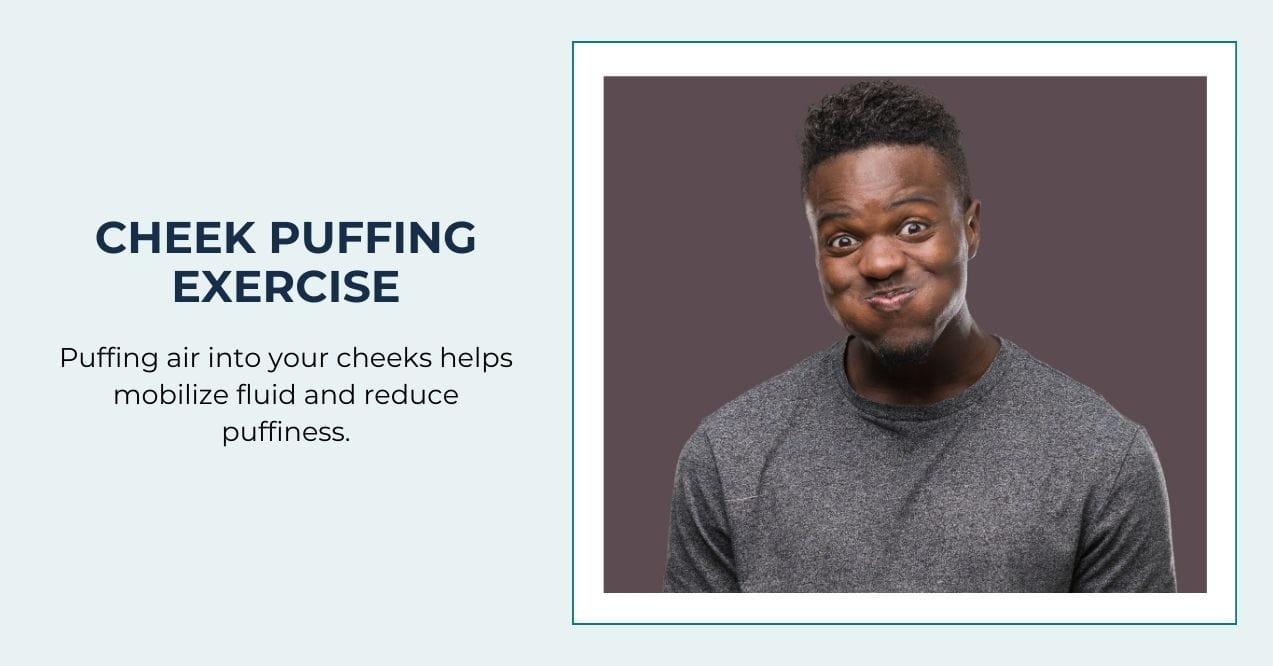
This exercise helps mobilize fluid in the cheek area:
- Close your mouth and puff air into your right cheek
- Hold for 5 seconds, then move the air to your left cheek
- Hold for 5 seconds, then puff both cheeks out together
- Release the air slowly
- Repeat this sequence 5 times
7. Facial Massage Techniques
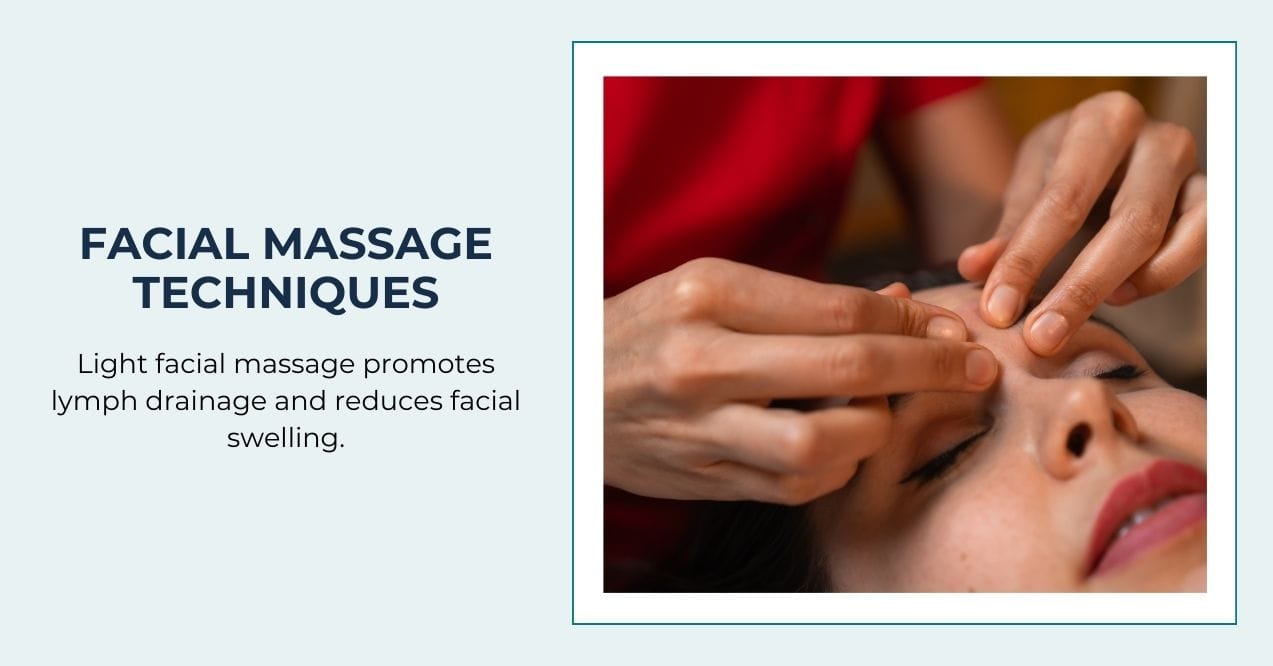
Gentle massage helps encourage fluid movement away from puffy areas:
- Apply a small amount of facial oil or moisturizer to clean fingertips
- Using your ring fingers, make light circular motions under your eyes, moving from inner to outer corners
- Massage along your jawline with light upward strokes
- Gently tap your fingertips around your entire face for 30 seconds
- Finish with light upward strokes from neck to forehead
Incorporating oils, such as castor oil for wrinkles into your massage routine may help keep the skin supple while promoting lymphatic drainage. Regular practice not only supports a refreshed appearance but also enhances lymphatic drainage massage benefits by encouraging natural fluid movement and reducing puffiness.
8. Eye Exercises
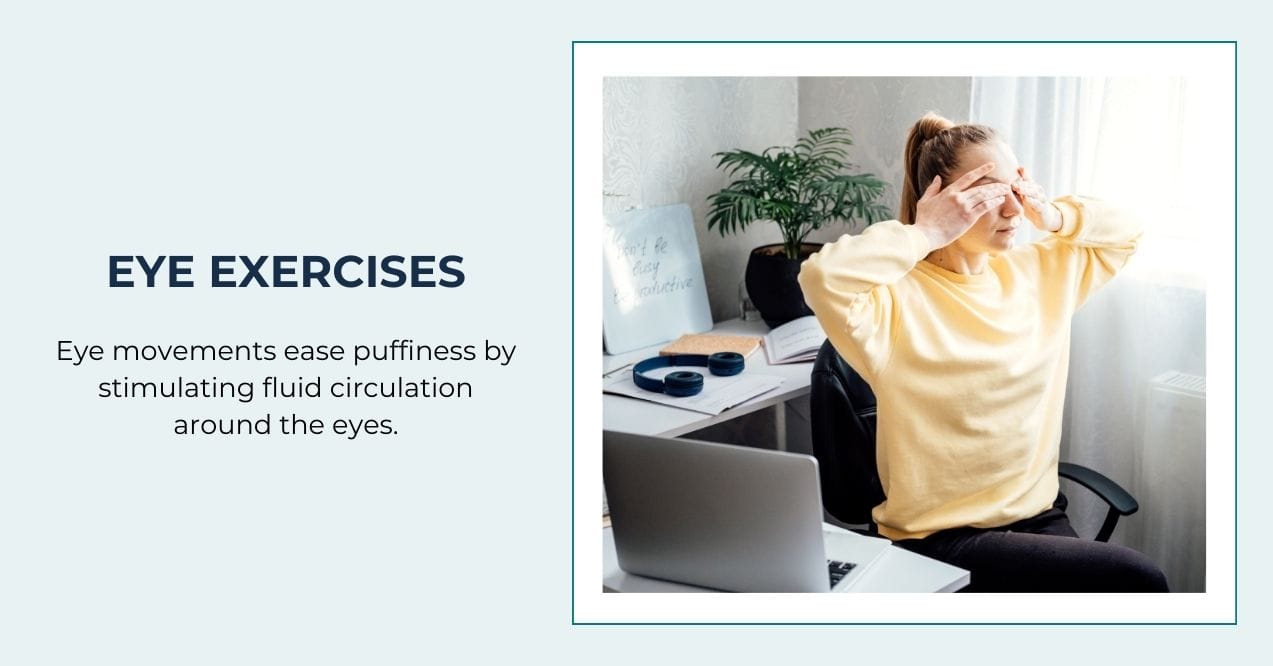
These movements help reduce fluid around tired, puffy eyes:
- Close your eyes tightly for 3 seconds, then open wide for 3 seconds
- Look up as high as possible without moving your head, hold for 3 seconds
- Look down, left, and right, holding each position for 3 seconds
- Move your eyes in a full circle clockwise 5 times, then counterclockwise 5 times
- Finish by gently pressing your palms over closed eyes for 10 seconds
9. Lip and Smile Exercise
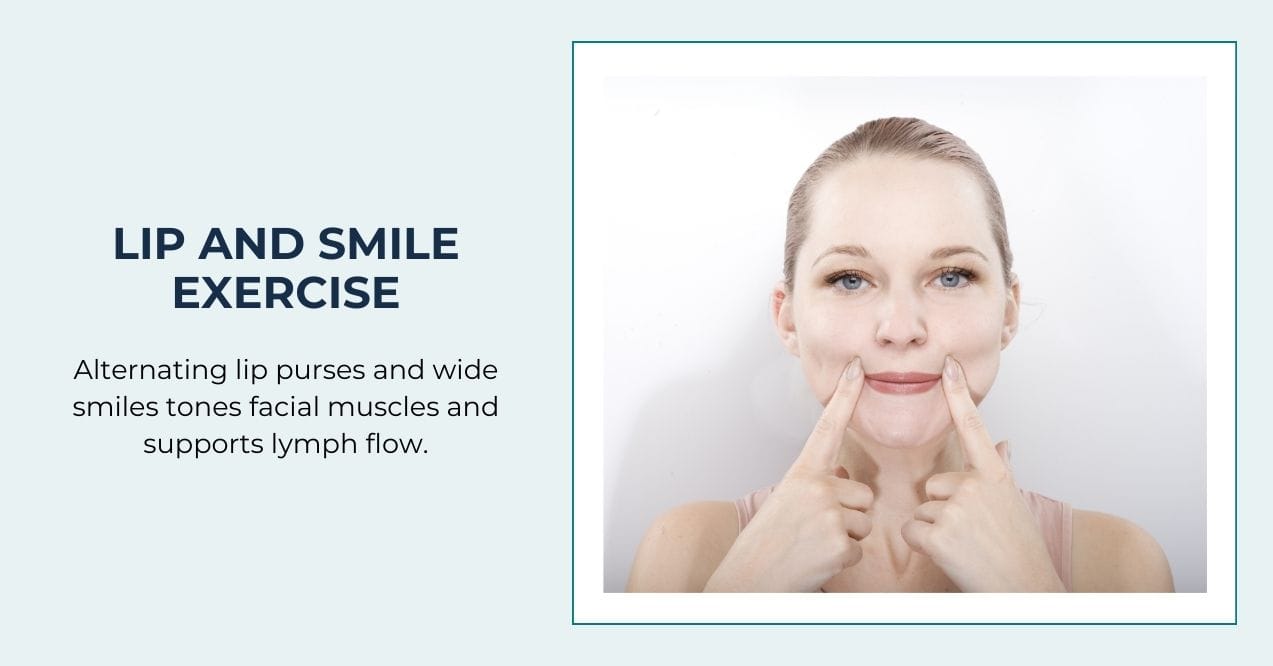
This exercise targets muscles around the mouth and cheeks:
- Purse your lips tightly as if holding a pencil, hold for 5 seconds
- Relax, then smile as widely as possible, hold for 5 seconds
- Alternate between pursed lips and wide smiles 10 times
- Finish by gently massaging the corners of your mouth
- Repeat 3 times
10. Gentle Neck Stretching
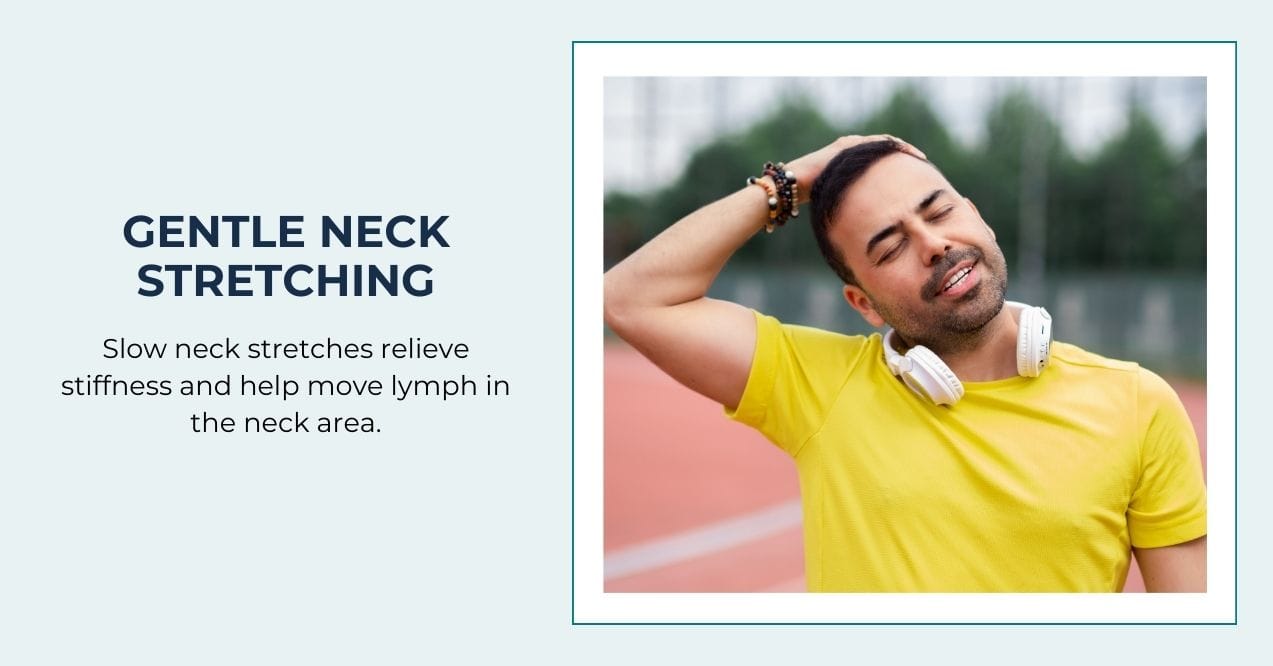
Wondering can I workout with swollen lymph nodes in neck areas? These gentle movements support fluid movement without strain:
- Sit comfortably with shoulders relaxed
- Slowly turn your head to look over your right shoulder
- Hold for 5 seconds, then return to center
- Turn to look over your left shoulder, hold for 5 seconds
- Repeat 5 times on each side, moving slowly and gently
Additional Tips to Support Fluid Balance in the Head and Face
Beyond the targeted exercises, simple daily habits can significantly enhance your body’s natural fluid regulation. These small lifestyle adjustments complement your rehabilitation routine and help maintain comfortable fluid levels in facial tissues.
- Stay Hydrated – Drink at least 8 glasses of water daily to support natural fluid movement. When your body receives adequate hydration, it’s less likely to retain excess fluid. Space your water intake throughout the day rather than consuming large amounts at once.
- Elevate Your Head While Sleeping – Use an extra pillow to slightly raise your head position during sleep. This elevation works with gravity to prevent fluid from pooling in facial tissues overnight. Many people notice significantly reduced morning puffiness after making this simple adjustment.
- Practice Gentle Facial Massage – Incorporate a daily 2-minute facial massage using light, upward strokes with your fingertips. Focus on areas where puffiness tends to occur, moving from the center of your face outward and upward. This technique helps stimulate circulation and supports how to clean your lymphatic system naturally.
- Stay Active – Add gentle, regular movement to your daily routine, such as a 15-minute morning walk or light stretching sessions. Consistent activity promotes overall circulation and helps maintain fluid balance throughout your body, including facial tissues.
These supportive habits, when practiced alongside your exercise routine, create powerful synergy for promoting comfort and reducing facial puffiness. However, consistency matters more than intensity – small daily efforts often yield the most sustainable results for facial fluid balance.
Conclusion
Incorporating these edema rehabilitation head and face exercises into your daily routine can make a significant difference in how you look and feel. The gentle movements, targeted techniques, and simple lifestyle habits work together to support your body’s natural fluid regulation systems.
Consistency is the key to success with these lymphatic exercises. Even just 5-10 minutes each morning can promote better comfort and reduced puffiness throughout the day. Start with the exercises that feel most comfortable for you, then gradually add others as you develop your personal routine.
Remember that your body responds best to gentle, regular attention rather than occasional intense efforts. Be patient with yourself as you explore these natural approaches to facial fluid balance.
Deep breathing combined with gentle facial massage techniques are most effective for edema. These exercises stimulate circulation and promote natural fluid movement away from puffy areas, especially when practiced consistently each morning.
Facial lymphedema responds well to a combination of gentle massage using upward strokes, neck side bends, jaw movements, and elevated sleeping positions. Staying properly hydrated and practicing daily facial exercises also supports natural drainage.
Shoulder rolls combined with neck stretches and deep breathing create the most effective routine for lymphedema. These movements stimulate the major lymphatic pathways, encouraging proper fluid circulation throughout the upper body and facial regions.
Gentle neck stretches, chin tucks, and shoulder rolls support swollen lymph nodes without causing strain. These movements promote circulation around lymph nodes while avoiding excessive pressure, helping maintain comfort and mobility in affected areas.
Sign up for our Healthy Living newsletter!
Advertisement. This site offers health, wellness, fitness and nutritional information and is designed for educational purposes only. You should not rely on this information as a substitute for, nor does it replace, professional medical advice, diagnosis, or treatment. If you have any concerns or questions about your health, you should always consult with a physician or other health-care professional. Do not disregard, avoid or delay obtaining medical or health related advice from your health-care professional because of something you may have read on this site. The use of any information provided on this site is solely at your own risk.
